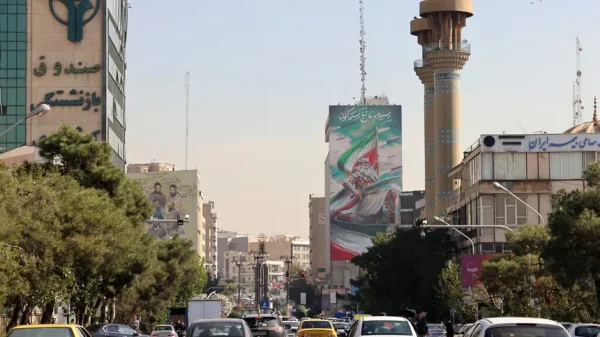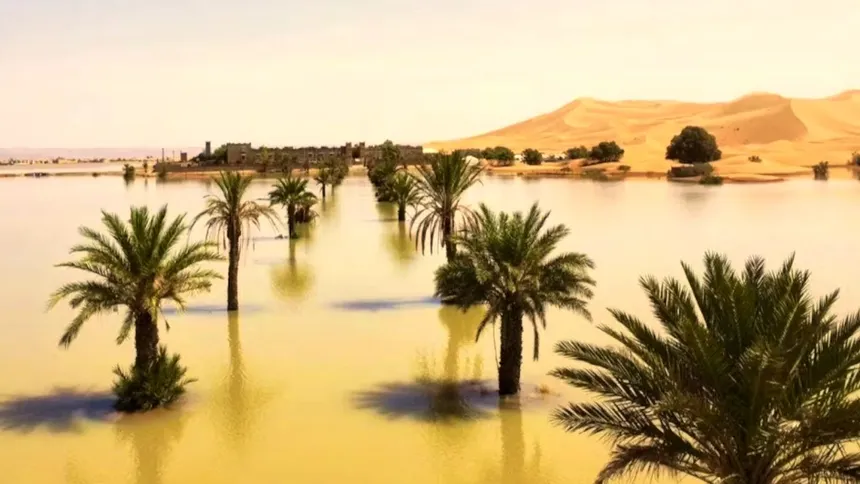The Sahara Desert, known for its arid terrain, has witnessed an unusual phenomenon – a torrent of rain that has left behind a tranquil terrain of blue lagoons and flooded sand dunes in the normally drought-stricken regions. The Moroccan government has reported that the two-day rainfall in September exceeded the yearly averages in several areas, including Tata, one of the hardest-hit regions. Tagounite, a village approximately 280 miles south of the capital, Rabat, recorded over 100mm of rain in a 24-hour period, the first time such a significant amount has been seen in decades.
The storms that accompanied this unusual weather pattern came as a respite to the region, which has been battling six consecutive years of drought. The prolonged dry spell has forced farmers to abandon their fields and cities to ration water consumption. However, the rare rainfall has brought much-needed relief to the region, replenishing the groundwater aquifers that supply water to desert communities. The region’s dammed reservoirs have reported record-breaking refilling rates in September, although it is unclear how far this will go towards alleviating the drought.

Sahara Desert’s Drought-Stricken Regions Replenished by Rare Rainfall (Image via Getty)
The rainfall has also had its share of challenges, with more than 20 reported deaths in Morocco and Algeria and significant damage to farmers’ harvests. To mitigate the effects, the government has allocated emergency relief funds, including in areas affected by last year’s earthquake. The rare event has also drawn attention from meteorologists, who are monitoring the region’s weather patterns closely. According to Houssine Youabeb, Morocco’s General Directorate of Meteorology, the region may experience more frequent and intense storms in the coming months and years, as the air retains more moisture.
The Nasa satellite images have provided a unique Look into the region’s transformation, with pictures of Lake Iriqui, a lakebed that had been dry for 50 years, filling up with water. The breathtaking images of palm trees and sand dunes submerged in water have left tourists and locals alike in awe. The Sahara Desert’s usually arid terrain has been revitalized, providing hope to the communities that call it home. The rare rainfall has brought much-needed relief to the region’s parched soil, and while the drought may not be completely over, the event has given residents a glimmer of optimism for the future.


























